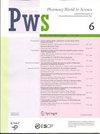DISEASE HISTORY OF A COMORBID PATIENT
引用次数: 0
Abstract
In real clinical practice, more and more doctors encounter comorbid pathology. The combination of cardiovascular diseases with the pathology of other internal organs dictates the need to prescribe a variety of drugs. A comorbid patient is a serious problem for any clinician, since in this case it is necessary to take into account several components of therapy, which makes it difficult to control the effectiveness of the treatment, increases polypharmacy, the likelihood of developing local and systemic side effects of drugs, and also reduces adherence to therapy. The article presents a discussion of the clinical case of a comorbid patient, which required a broad outlook of the therapist in the field of not only cardiological aspects of diagnosis and treatment, but also nephrological, rheumatological. The stages of the performed diagnostic search with the verification of the clinical diagnosis and the tactics of the prescribed pharmacotherapy are given. Based on the presented data, it is shown that in conditions of comorbidity it is difficult for a doctor to avoid polypharmacy. We present to your attention a clinical observation in which combined independent clinical conditions acquire the character of comorbid processes, determining the difficult situation of choosing a rational therapy.合并症患者的病史
在实际的临床实践中,越来越多的医生遇到了共病病理。心血管疾病与其他内脏器官的病理相结合,需要开各种各样的药物。对于任何临床医生来说,合并症患者都是一个严重的问题,因为在这种情况下,必须考虑到治疗的几个组成部分,这使得难以控制治疗的有效性,增加了多重用药,产生局部和全身药物副作用的可能性,并且还降低了对治疗的坚持性。本文介绍了一个合并症患者的临床病例的讨论,这需要广阔的前景,不仅在心脏病方面的诊断和治疗,而且在肾病,风湿病领域的治疗师。通过临床诊断的验证,给出了进行诊断搜索的阶段和规定的药物治疗策略。根据提出的数据,它表明,在合并症的条件下,医生很难避免多药。我们向您介绍一项临床观察,其中合并的独立临床条件获得合并症过程的特征,确定了选择合理治疗的困难情况。
本文章由计算机程序翻译,如有差异,请以英文原文为准。
求助全文
约1分钟内获得全文
求助全文

 求助内容:
求助内容: 应助结果提醒方式:
应助结果提醒方式:


